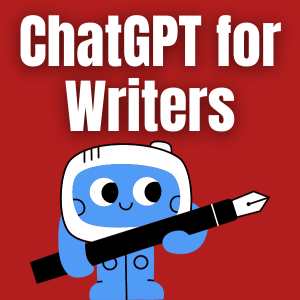When dealing with writer’s block, engaging in a dialogue with ChatGPT can be a valuable strategy. By articulating your challenges or discussing your ideas with the model, you’re essentially externalizing your thoughts.
This process of verbalizing your creative struggles can often lead to newfound clarity and inspiration. For example, if you’re uncertain about a character’s motivations or the direction of your plot, initiating a conversation with ChatGPT allows you to explore various possibilities.
The model’s responses might trigger fresh perspectives, helping you overcome the mental hurdles that impede your progress. This conversational approach transforms the solitary act of writing into a collaborative and interactive experience, fostering creativity and overcoming writer’s block.
Overcoming writer’s block with ChatGPT involves engaging in a collaborative and exploratory process. Here are steps to effectively use ChatGPT for overcoming writer’s block:
Acknowledge the Block:
Recognize that you’re facing writer’s block and that it’s a common challenge. Accepting this reality can help you approach the solution with a positive mindset.
Describe the Challenge:
Clearly articulate the specific challenge or roadblock you’re facing. Whether it’s a plot hole, character development issue, or general lack of inspiration, express the problem in your own words.
Initiate a Conversation:
Engage ChatGPT in a conversation about your writing project. Share details about the genre, characters, setting, or any specific elements you’re struggling with. This process can help you externalize your thoughts and gain fresh perspectives.
Ask Open-Ended Questions:
Pose open-ended questions to ChatGPT that encourage exploration and idea generation. For example, “What are some alternative plot twists for my story?” or “How can I make my protagonist more relatable?”
Explore Different Angles:
Encourage ChatGPT to explore different angles or approaches to your writing challenge. This can lead to novel ideas that you might not have considered on your own.
Use Writing Prompts for Inspiration:
Request writing prompts related to your project. These prompts can serve as starting points for short exercises or writing sprints to kickstart your creativity.
Freeform Brainstorming:
Allow ChatGPT to assist in freeform brainstorming. Share your thoughts, and let ChatGPT contribute by expanding on ideas or suggesting new directions. This collaborative process can help break through mental barriers.
Visualize Scenes:
Describe specific scenes or moments you envision in your project, and ask ChatGPT to help you visualize and build upon those scenes. This can add depth to your narrative and reignite your creative spark.
Reframe the Challenge:
Consider asking ChatGPT to reframe the writing challenge. For instance, if you’re stuck on a specific character arc, ask for alternative perspectives or ways to approach the character’s development.
Take Breaks and Reflect:
During breaks, reflect on the ideas and suggestions provided by ChatGPT. Sometimes, stepping away and returning with fresh eyes can help you see new possibilities or solutions.
ChatGPT prompts to overcome writer’s block
Character Exploration:
“Describe a character who is facing a major decision. Explore their emotions, motivations, and the potential outcomes of their choice.”
Setting Inspiration:
“Imagine a vivid and unique setting for your story. Describe the details, atmosphere, and how it influences the characters and plot.”
Conflict Resolution:
“Create a resolution to a conflict in your story. How do the characters overcome challenges, and what lessons do they learn?”
Dialogue Exercise:
“Write a dialogue between two characters discussing a significant event. Focus on making the conversation dynamic and revealing.”
Flash Fiction Prompt:
“Write a short, 100-word story about a surprising encounter. Use this as a starting point for expanding into a larger narrative.”
Genre Switch:
“Switch the genre of your story for a moment. If it’s a mystery, reimagine it as a romance or a fantasy. How does the plot change?”
Time Travel Scenario:
“Introduce a time travel element into your story. Explore how it affects the characters and the overall narrative.”
What-If Scenario:
“Pose a ‘what if’ scenario related to your story. How would the plot unfold if a key event took a different turn?”
Random Word Association:
“Provide a random word, and incorporate it into your story in a meaningful way. Let it spark new ideas and connections.”
Dream Sequence:
“Write a dream sequence for one of your characters. How does the dream reflect their fears, desires, or unresolved issues?”
In Medias Res Opening:
“Start your story in the middle of the action. Write a compelling scene that captures the reader’s attention from the outset.”
Character Swap:
“Swap the personalities or roles of two characters in your story. How does this alter the dynamics and direction of the narrative?”
Symbolism Exercise:
“Choose an object or symbol from your story and explore its symbolic meaning. How can you use it to enhance the thematic elements?”
Poetry Challenge:
“Express a key moment or emotion in your story through poetry. This can help you tap into a different creative space.”
Future Epilogue:
“Write a brief epilogue set in the future, revealing the long-term consequences of your characters’ actions.”
Interview Your Characters:
“Interview one of your characters. Explore their background, motivations, and how they perceive the events in your story.”
Plot Twist Exploration:
“Brainstorm three unexpected plot twists for your story. How do these twists change the trajectory of the narrative?”
Parallel Storyline:
“Introduce a parallel storyline or subplot to your main narrative. How do the two storylines intersect and influence each other?”
Eavesdrop and Imagine:
“Eavesdrop on a conversation in a public place and use it as inspiration to create a new scene or dialogue for your story.”
Personal Experience Reflection:
“Reflect on a personal experience and find ways to integrate the emotions and insights into your story. How can your own life inform your writing?”
Feel free to choose ChatGPT prompts that resonate with your specific writing project or mix and match them to address different aspects of your narrative. The goal is to spark creativity and break through the blockage by approaching your story from new angles.
How to Use ChatGPT for Writers


